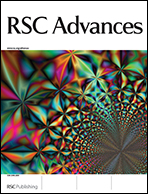Ligandassembly and chirality transfer guided by DNA modified with enantiomerically pure [2.2]paracyclophanes†
Abstract
Enantiomerically pure (Rp)- and (Sp)-4-azido[2.2]paracyclophane was incorporated into DNA using copper-catalysed azide–
![Graphical abstract: Ligand assembly and chirality transfer guided by DNA modified with enantiomerically pure [2.2]paracyclophanes](/en/Image/Get?imageInfo.ImageType=GA&imageInfo.ImageIdentifier.ManuscriptID=C3RA41841C&imageInfo.ImageIdentifier.Year=2013)
- This article is part of the themed collection: Nucleic acids: new life, new materials

 Please wait while we load your content...
Please wait while we load your content...